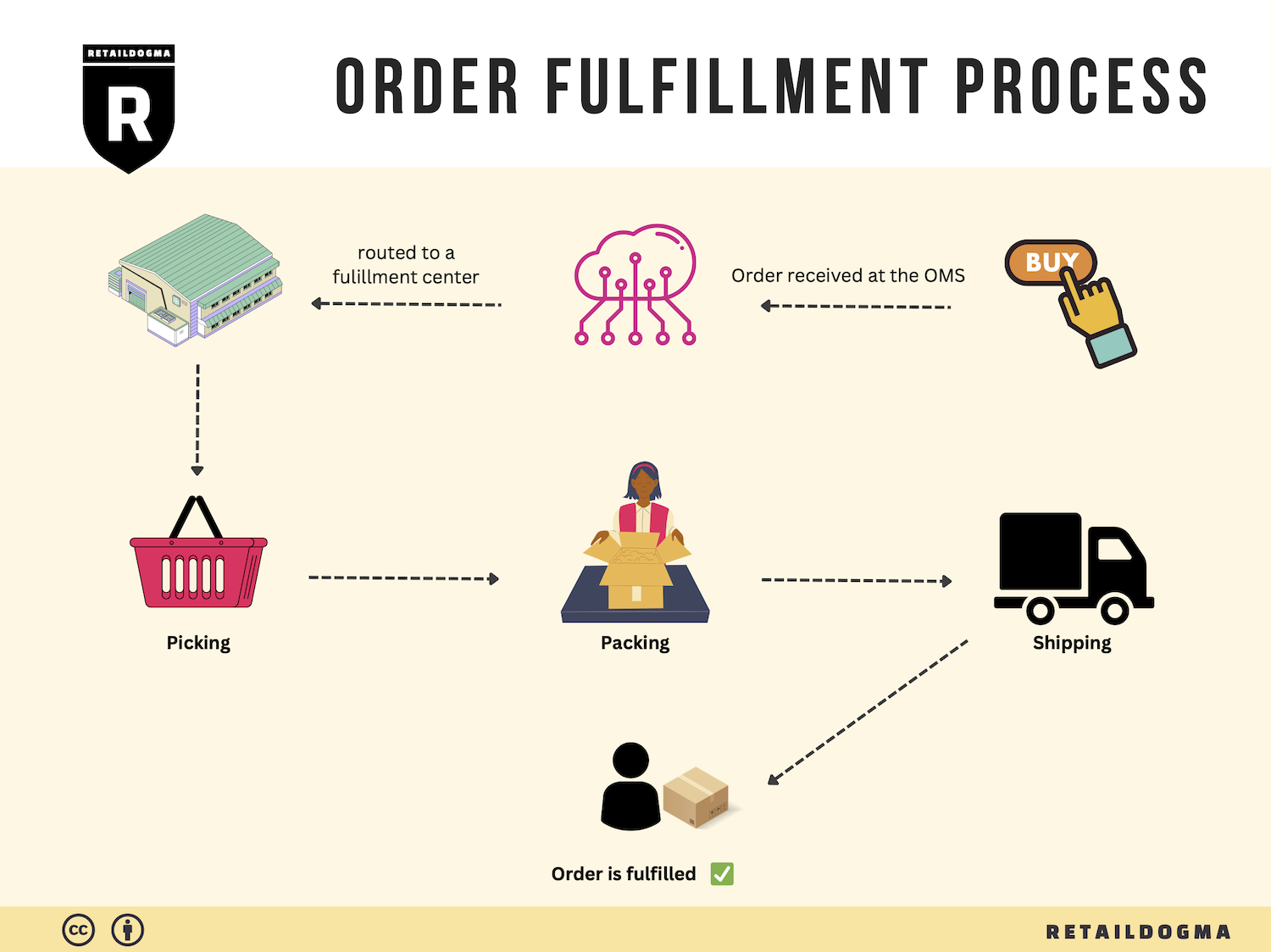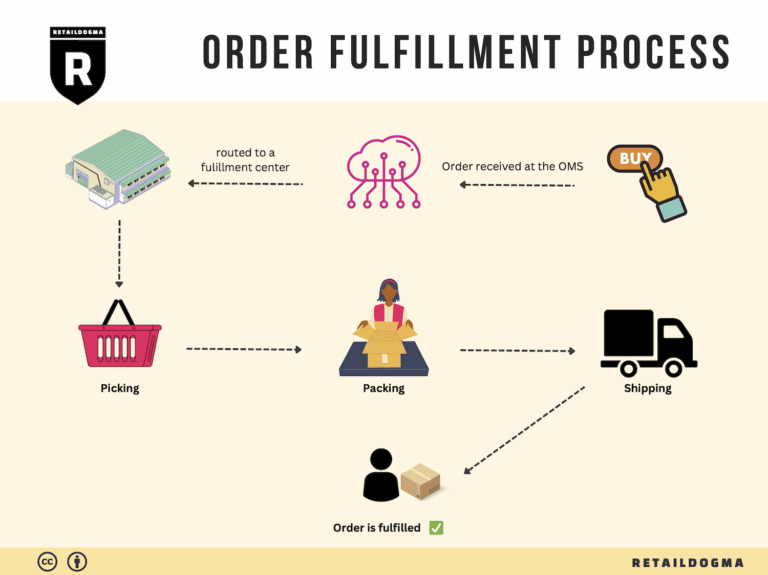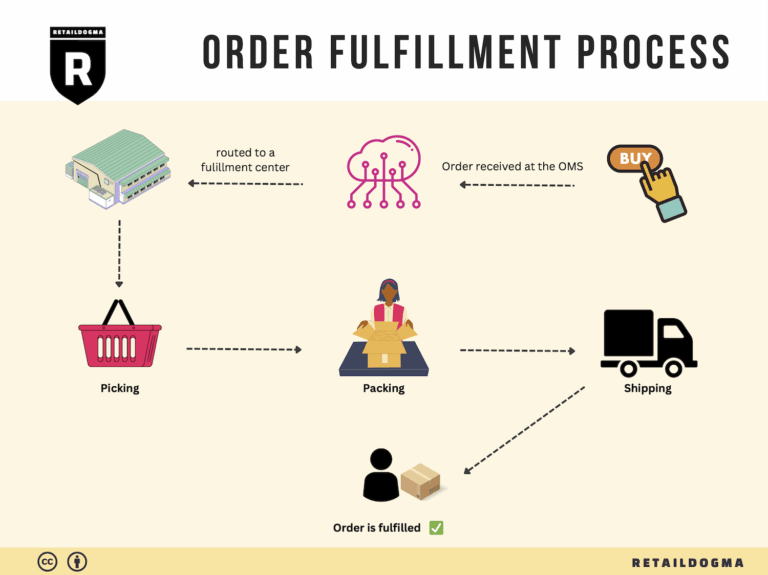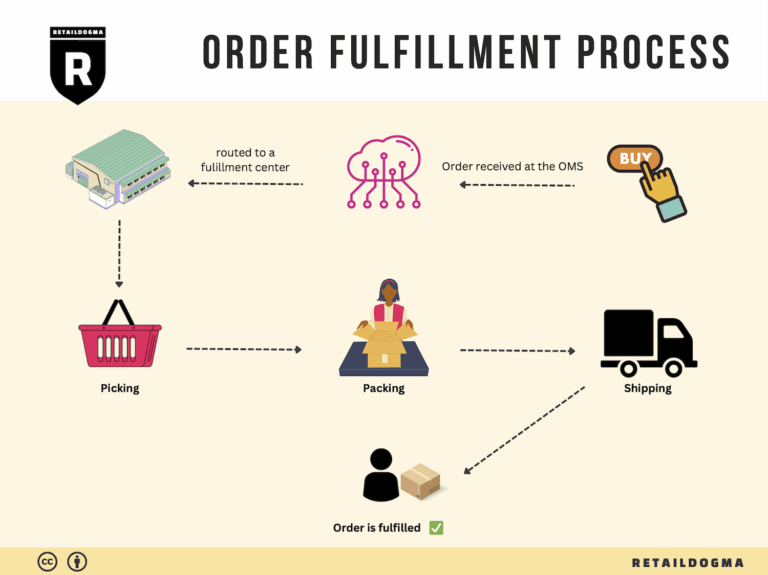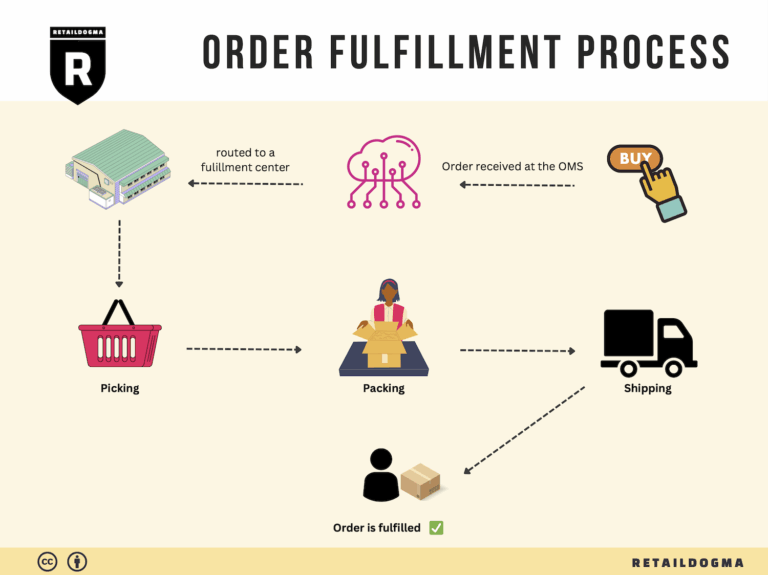What Is A Fulfillment Center? A Complete Guide (2025)
What is E-commerce Fulfillment? An Introduction for Growing Businesses
The Growing Challenge of Order Fulfillment
As an e-commerce business owner, you may find yourself overwhelmed with the complexities of packing and shipping orders. The excitement of growing sales can quickly turn into a logistical nightmare when you face the realities of managing inventory, processing orders, and ensuring timely delivery. These challenges can detract from your core focus—growing your business and serving your customers. This is where understanding e-commerce fulfillment becomes essential.
At its core, fulfillment is the process of getting a product to a customer, encompassing everything from receiving inventory and storing it to packing orders and shipping them out. For growing businesses, mastering this process is crucial not just for operational efficiency but also for maintaining customer satisfaction and loyalty.
Understanding Fulfillment Models
In this guide, we will delve into various fulfillment models that can help streamline your logistics. We will explore options like Third-Party Logistics (3PL) and Fulfillment by Amazon (FBA), each offering distinct advantages and challenges. Understanding these models will empower you to choose the right fit for your business needs.
Core Fulfillment Services
Additionally, we will outline the core services typically included in e-commerce fulfillment. This includes inventory management, order processing, packing, shipping, and returns handling. Each of these components plays a vital role in ensuring that your customers receive their orders promptly and in excellent condition.
Choosing the Right Fulfillment Partner
Selecting the right fulfillment partner is a critical decision that can impact your business’s growth trajectory. We will provide practical advice on what to look for when evaluating potential partners, including their technology, scalability, location, and customer service capabilities.
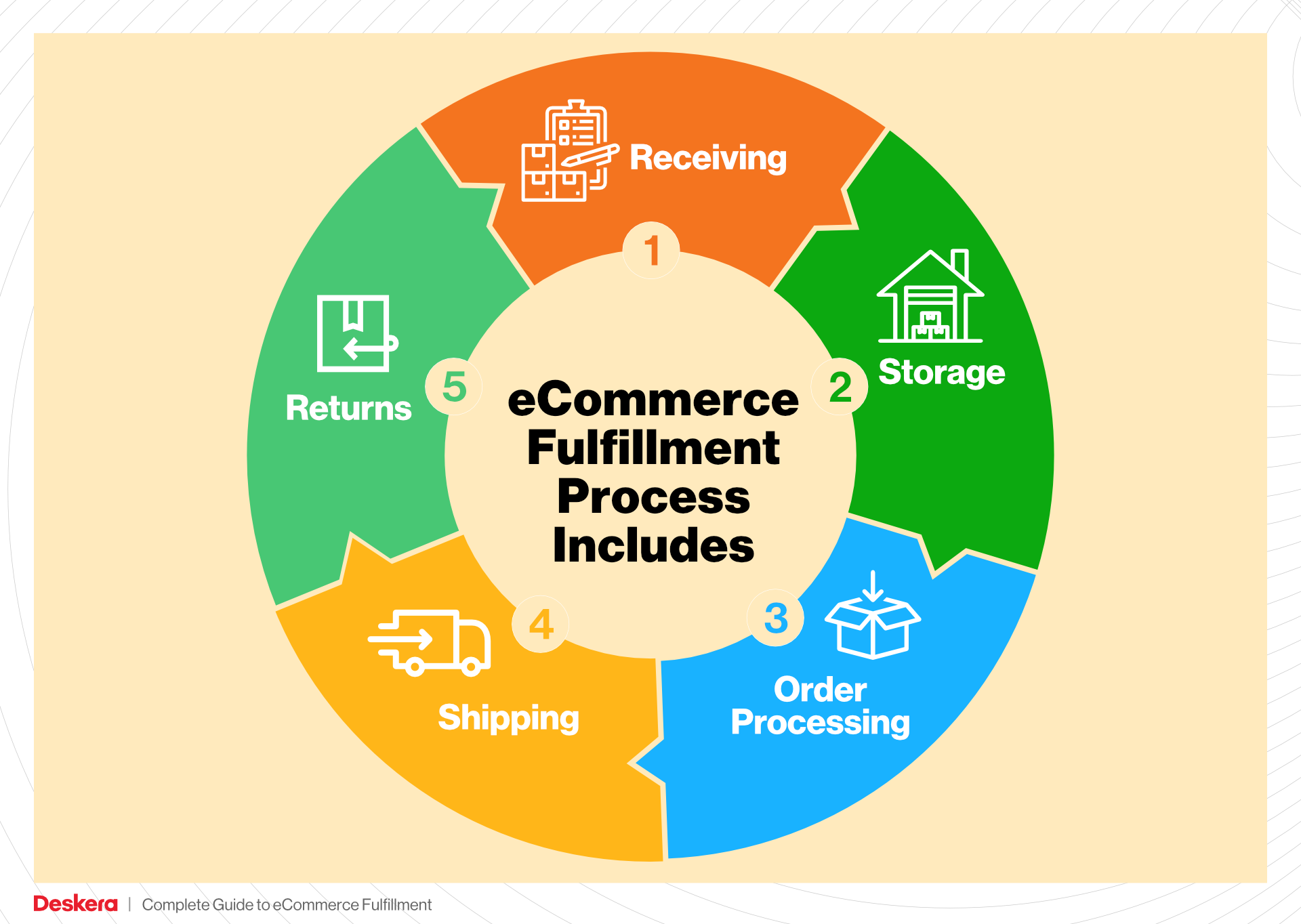
Pricing Considerations
Finally, we will break down the pricing models associated with different fulfillment services. Understanding these costs will help you budget effectively and make informed decisions that align with your financial goals.
Empowering Smart Logistics Decisions
The goal of this guide is to empower you with the knowledge and tools necessary to make smart decisions about your logistics. By understanding the ins and outs of e-commerce fulfillment, you can focus on what you do best—growing your business and delighting your customers. Whether you’re just starting or looking to scale, effective fulfillment strategies will set the foundation for your long-term success.
What You’ll Learn In This Guide
- What is E-commerce Fulfillment? An Introduction for Growing Businesses
- The Order Fulfillment Process: From ‘Buy’ Button to Customer’s Door
- Comparing Fulfillment Models: In-House vs. 3PL vs. Dropshipping
- A Deep Dive into Amazon FBA: Pros, Cons, and Who It’s For
- Core Services Offered by Fulfillment Centers
- How to Choose a Fulfillment Partner: A 6-Point Checklist
- Understanding Fulfillment Pricing: A Breakdown of Common Fees
- Frequently Asked Questions (FAQs) about Fulfillment
- Conclusion: Is Outsourcing Fulfillment the Right Move for Your Business?
- Important Disclaimer
The Order Fulfillment Process: From ‘Buy’ Button to Customer’s Door
1. Receiving Inventory
The order fulfillment process begins with receiving inventory at the fulfillment center. When goods arrive at Amazon Fulfillment Center GSO1 in Kernersville, NC, they are unloaded and verified against the shipping documents. This step is critical to ensure that the correct quantities and types of products have been delivered.
During this process, each item is assigned a Stock Keeping Unit (SKU), which is a unique identifier that helps track inventory throughout the fulfillment process. Proper receiving practices help to minimize errors and discrepancies, ultimately supporting a smoother workflow in later stages. Efficient inventory management at this stage lays the groundwork for timely order fulfillment, which is essential for maintaining customer satisfaction.
2. Warehouse Storage
Once the inventory is verified, it is stored in designated locations within the warehouse. This step involves categorizing and organizing products based on various factors, including size, weight, and demand. Efficient warehouse storage is vital because it directly impacts the speed and efficiency of order picking.
Amazon Fulfillment Center GSO1 utilizes advanced technology, including automated storage and retrieval systems, to optimize space and streamline operations. Properly organized inventory reduces the time spent searching for items, which can significantly enhance operational efficiency. Furthermore, understanding the concept of “slotting”—the strategic placement of products—can help businesses maximize storage space and improve picking speed.
3. Order Picking
Order picking is the process of retrieving items from their storage locations to fulfill customer orders. When a customer clicks the ‘buy’ button, the order is generated in the system, and a pick list is created. This list details the items needed for each order, along with their respective locations within the warehouse.
Efficient order picking is crucial for meeting customer expectations, especially in a fast-paced e-commerce environment where same-day or next-day shipping is often anticipated. There are various picking methods, such as single order picking and batch picking, which can be employed based on the volume and nature of orders. The goal is to minimize travel time and maximize accuracy, ensuring that the right products are selected for each shipment.
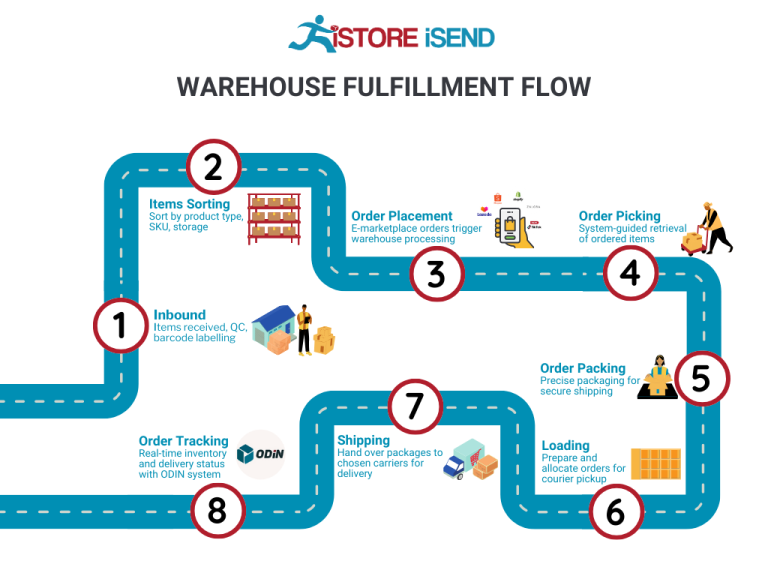
4. Order Packing
After items are picked, they move on to the packing stage. In this step, products are carefully packed into shipping boxes, ensuring that they are secure and protected during transit. The packing process involves selecting appropriate packaging materials, labeling, and preparing the shipment for delivery.
This stage is essential not only for safeguarding products but also for maintaining a professional image. Properly packed orders reduce the risk of damage and returns, which can be costly for e-commerce businesses. Additionally, incorporating branded packaging can enhance the customer experience and foster brand loyalty. The concept of “packaging optimization” should be considered, which focuses on using the right amount of materials to minimize waste while ensuring product safety.
5. Shipping & Delivery
The final step in the order fulfillment process is shipping and delivery. Once orders are packed, they are sorted based on delivery routes and handed over to shipping carriers such as UPS, FedEx, or USPS. This step is critical for ensuring that packages reach customers promptly.
Shipping logistics involve various considerations, including choosing the right carrier, determining shipping costs, and selecting delivery methods that align with customer expectations. Amazon Fulfillment Center GSO1 is strategically located to facilitate efficient shipping, with access to major transportation routes. Understanding terms like “last-mile delivery” can help businesses optimize their logistics strategy and improve customer satisfaction. Timely and accurate delivery is essential for maintaining a competitive edge in the e-commerce landscape, as it significantly impacts customer retention and overall satisfaction.
By mastering these five key steps in the order fulfillment process, e-commerce businesses can enhance their operational efficiency, reduce costs, and improve customer satisfaction, ultimately positioning themselves for growth and success in the competitive online marketplace.
Comparing Fulfillment Models: In-House vs. 3PL vs. Dropshipping
Fulfillment Model Comparison
| Model | Who Handles Inventory | Best For (Business Stage) | Key Advantage | Key Disadvantage |
|---|---|---|---|---|
| In-House Fulfillment | Business Owner | Established businesses | Full control over inventory and operations | High overhead costs and resource commitment |
| Third-Party Logistics (3PL) | 3PL Provider | Growing businesses | Scalability and access to logistics expertise | Less control over inventory and processes |
| Dropshipping | Supplier | Startups and small businesses | Low startup costs and minimal risk | Lower profit margins and reliance on suppliers |
In-House Fulfillment
In-house fulfillment refers to the process where a business manages all aspects of storage, packing, and shipping directly from its own facilities. This model is often favored by established businesses that have the resources and infrastructure to handle logistics internally. The primary advantage of in-house fulfillment is the level of control it offers. Businesses can dictate their own processes, quality standards, and inventory management practices, which can lead to improved customer satisfaction and operational efficiency. However, this control comes at a price. The overhead costs associated with staffing, warehousing, and technology can be significant. Additionally, as demand fluctuates, maintaining an in-house operation can lead to challenges in scalability and resource allocation, making it less flexible compared to other fulfillment options.
Third-Party Logistics (3PL)
Third-party logistics (3PL) involves outsourcing logistics and fulfillment tasks to an external provider. This model is ideal for growing businesses that need to scale operations without the burden of managing logistics themselves. A key advantage of using a 3PL is access to specialized expertise in logistics and supply chain management. These providers often have established networks and relationships with carriers, allowing for more efficient shipping and reduced costs. Additionally, businesses can focus on their core competencies, such as product development and marketing, while leaving logistics to the experts. However, the trade-off is a loss of direct control over inventory and fulfillment processes. This can sometimes lead to inconsistencies in service quality or issues with inventory accuracy if the 3PL provider does not meet the business’s standards.
Dropshipping
Dropshipping is a fulfillment model where a retailer does not keep goods in stock but instead transfers customer orders directly to a manufacturer or wholesaler, who then ships the products directly to the customer. This model is particularly beneficial for startups and small businesses that want to minimize their initial investment and risk. The primary advantage of dropshipping is its low startup cost; businesses can sell products without the need to invest in inventory or warehouse space. This model allows entrepreneurs to test various products and markets with minimal financial commitment. However, dropshipping comes with its own set of challenges, such as lower profit margins and a heavy reliance on suppliers for inventory management and shipping. If suppliers face delays or stock issues, it directly impacts the retailer’s ability to fulfill customer orders, which can harm brand reputation.
Conclusion
When deciding on a fulfillment model, e-commerce business owners must consider their current operational capabilities, growth projections, and financial resources. Each model presents unique advantages and challenges, and the right choice will depend on individual business needs and goals. For established businesses with significant resources, in-house fulfillment may provide the best control and efficiency. Conversely, for those looking to scale rapidly without the overhead, a 3PL can offer a streamlined and expert approach. Lastly, dropshipping remains an attractive option for startups seeking to minimize risks and test the market before committing to larger investments. Understanding these models will empower entrepreneurs to make informed decisions that align with their strategic objectives.
A Deep Dive into Amazon FBA: Pros, Cons, and Who It’s For
Understanding Fulfillment by Amazon (FBA)
Fulfillment by Amazon (FBA) is a service that allows e-commerce sellers to store their products in Amazon’s fulfillment centers. Amazon takes care of storage, packaging, and shipping, enabling sellers to leverage Amazon’s extensive logistics network. This service is particularly advantageous for businesses looking to scale quickly without the overhead of managing their own warehousing and shipping operations.
How FBA Works
-
Product Setup: Sellers create an Amazon seller account and list their products on the platform. They then prepare their items for shipment to an Amazon fulfillment center, ensuring they meet Amazon’s packaging and labeling requirements.
-
Shipping to Fulfillment Centers: Once the products are ready, sellers send their inventory to designated Amazon fulfillment centers. For the GSO1 center located in Kernersville, NC, this means leveraging a facility that is strategically positioned for efficient distribution.
-
Storage: Amazon stores the products in their warehouses. Sellers are charged storage fees based on the amount of space their inventory occupies.
-
Order Processing: When a customer places an order for a product fulfilled by Amazon, the order is processed automatically. Amazon handles the picking, packing, and shipping of the product directly to the customer.
-
Customer Service: Amazon also manages customer service and returns for FBA orders, providing a seamless experience for both sellers and buyers.
-
Prime Eligibility: Products sold through FBA are eligible for Amazon Prime, allowing for expedited shipping options that can significantly enhance sales potential.
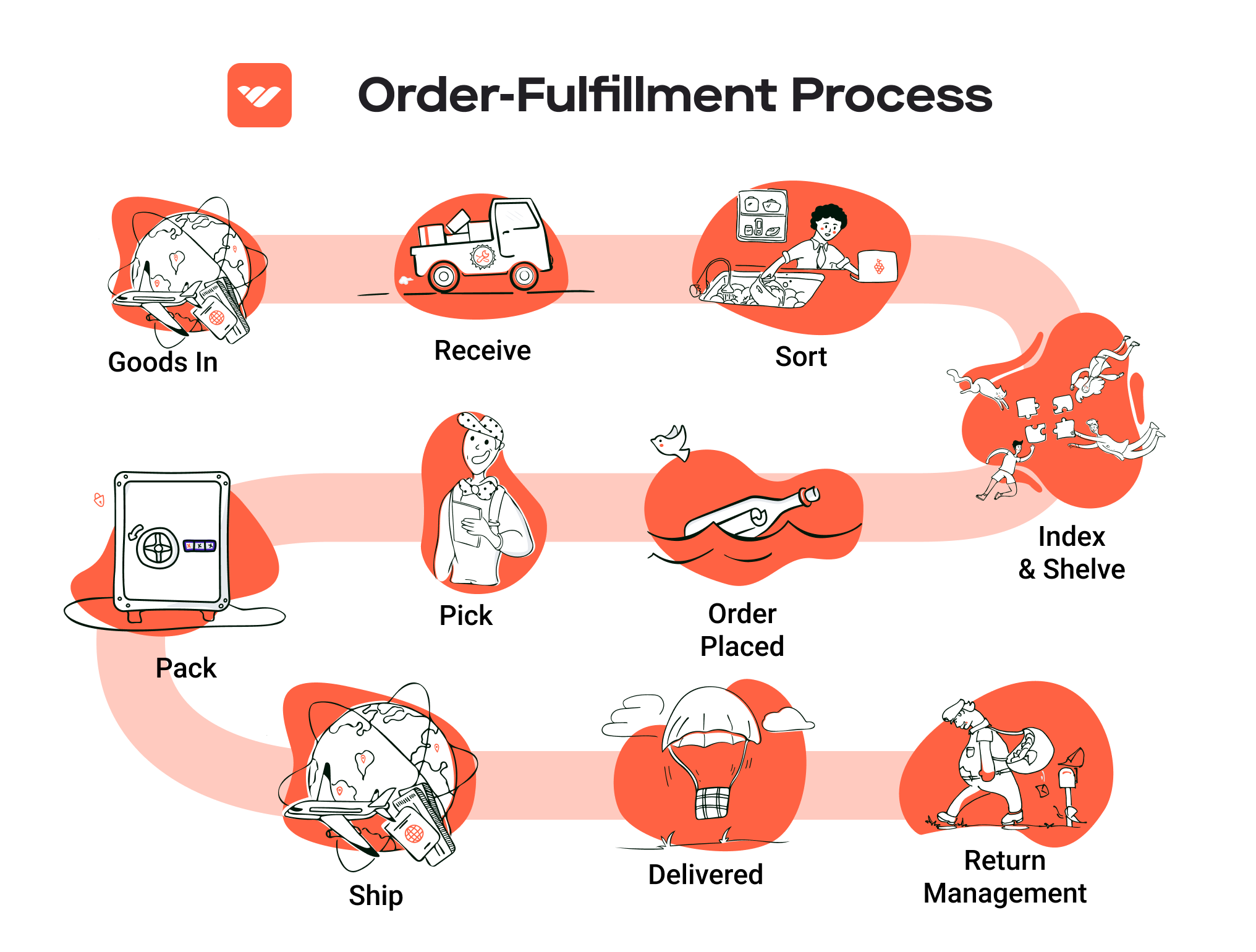
Pros of Using FBA
1. Prime Eligibility
One of the most compelling advantages of using FBA is that products become eligible for Amazon Prime. This opens up access to millions of Prime members who prefer the convenience of fast, free shipping. As a result, sellers often experience increased sales velocity and higher conversion rates.
2. Enhanced Customer Trust
When customers see that a product is fulfilled by Amazon, it instills a sense of trust. Amazon is known for its customer service, reliability, and speedy delivery. This association can lead to higher sales and repeat customers for sellers.
3. Multi-Channel Fulfillment
FBA allows sellers to fulfill orders from other sales channels, such as their own websites or other marketplaces, using Amazon’s logistics. This means sellers can streamline their operations by managing inventory in one place while reaching a broader audience.
4. Simplified Logistics
Outsourcing logistics to Amazon means sellers can focus on other aspects of their business, such as marketing and product development. Amazon’s state-of-the-art facilities and technology streamline the fulfillment process, reducing the operational burden on sellers.
5. Scalability
FBA is designed to help businesses scale. As demand for products increases, sellers can send more inventory to Amazon without the need to invest in additional warehousing or logistics capabilities.
Cons of Using FBA
1. High Fees
While FBA offers numerous benefits, it comes with significant costs. Sellers incur storage fees based on the volume of inventory stored in Amazon’s fulfillment centers, as well as fulfillment fees for every item sold. These costs can eat into profit margins, especially for low-cost items.
2. Strict Inventory Management Rules
Amazon imposes strict guidelines on inventory management, including limits on the number of units that can be sent to fulfillment centers. Sellers must also monitor their inventory levels closely to avoid long-term storage fees for items that do not sell quickly.
3. Commingling Risks
FBA operates on a commingling model, which means that inventory from different sellers can be stored together. This can lead to issues if a seller’s products are mixed with inferior or damaged items, potentially impacting their seller rating and customer satisfaction.
4. Lack of Control Over Fulfillment
While outsourcing fulfillment can be a relief, it also means giving up control over the packing and shipping process. Sellers may have concerns about how their products are handled and presented to customers, which can affect brand perception.
5. Complicated Returns Process
Although Amazon handles customer returns, this can sometimes complicate matters for sellers, especially if items are returned damaged or if they need to be restocked. This can lead to additional costs and inventory management challenges.
Who is FBA Best For?
Fulfillment by Amazon is particularly suited for:
-
Small to Medium-Sized Businesses: Businesses that lack the resources to manage their own fulfillment operations can benefit greatly from FBA’s logistics capabilities.
-
E-commerce Entrepreneurs: New sellers looking to establish a presence on Amazon can leverage FBA to gain credibility and access to Prime customers without the upfront investment in logistics.
-
Businesses with High Sales Volume: Companies that already have a proven sales record and are looking to scale their operations can take advantage of FBA’s efficiency and reach.
-
Sellers with Diverse Product Lines: For businesses offering a wide range of products, FBA allows for centralized inventory management and fulfillment, simplifying logistics.
-
Those Focused on Growth: Companies aiming for rapid growth and market penetration can utilize FBA to maximize their reach and streamline operations, allowing them to focus on strategic growth initiatives.
In conclusion, while Fulfillment by Amazon offers a plethora of advantages that can facilitate growth and efficiency for e-commerce businesses, it is essential for sellers to weigh these benefits against the potential downsides, such as fees and inventory management challenges. Understanding the nuances of FBA can help businesses make informed decisions about whether it is the right fulfillment strategy for their growth trajectory.
Core Services Offered by Fulfillment Centers
Inventory Management & Warehousing
Inventory management and warehousing are foundational services provided by fulfillment centers. These centers offer businesses the ability to store their products in a secure, organized environment, ensuring that goods are readily available for order fulfillment. Fulfillment centers like Amazon GSO1 utilize advanced inventory management systems that provide real-time visibility into stock levels, allowing e-commerce businesses to track inventory efficiently.
Benefits:
– Optimized Stock Levels: By leveraging sophisticated tracking systems, businesses can maintain optimal stock levels, minimizing the risk of overstocking or stockouts. This ensures that popular items are always available to meet customer demand.
– Space Efficiency: Fulfillment centers offer scalable warehousing solutions, enabling businesses to expand without the burden of managing their own facilities. This flexibility allows e-commerce businesses to adapt to seasonal fluctuations in demand seamlessly.
– Cost Savings: Outsourcing warehousing to a fulfillment center reduces overhead costs associated with maintaining a warehouse, such as rent, utilities, and staffing. This can significantly enhance a business’s bottom line, particularly for small to medium-sized enterprises.
Pick and Pack Services
Pick and pack services are critical for order fulfillment in the e-commerce landscape. This process involves selecting items from inventory (picking) and preparing them for shipment (packing). Fulfillment centers utilize systematic approaches to streamline these operations, ensuring orders are accurately filled and shipped promptly.
Benefits:
– Speed and Accuracy: Automated systems and skilled staff work together to ensure that orders are picked and packed quickly and accurately. This efficiency reduces the likelihood of errors, which can lead to customer dissatisfaction.
– Scalability: As businesses grow, their order volumes can fluctuate dramatically. Fulfillment centers can scale their pick and pack operations to accommodate these changes, allowing businesses to focus on growth rather than logistics.
– Customized Packaging: Many fulfillment centers offer customizable packing options, enabling businesses to enhance their branding through unique packaging. This not only improves the customer experience but can also foster brand loyalty.
Kitting and Assembly
Kitting and assembly services involve grouping individual items into ready-to-ship sets or configuring products to meet specific customer requirements. This service is particularly beneficial for businesses that sell complex products or promotional bundles.
Benefits:
– Enhanced Product Offerings: Kitting allows businesses to offer bundled products or kits that provide added value to customers. This can lead to increased sales and higher average order values.
– Reduced Time-to-Market: By outsourcing kitting and assembly to fulfillment centers, businesses can accelerate their time-to-market for new products. This is essential in a fast-paced e-commerce environment where speed can be a competitive advantage.
– Streamlined Operations: Fulfillment centers manage the logistics of kitting and assembly, freeing up internal resources. This allows businesses to concentrate on core activities such as marketing and product development while ensuring that their offerings are efficiently packaged and ready for shipment.
Returns Management (Reverse Logistics)
Returns management, often referred to as reverse logistics, is an essential service offered by fulfillment centers. This process involves handling returned items, inspecting them, restocking them, or processing them for refurbishment or disposal.
Benefits:
– Improved Customer Satisfaction: Efficient returns processing is crucial for maintaining customer trust. Fulfillment centers streamline the returns process, making it easier for customers to return products and receive refunds or exchanges, which enhances overall satisfaction.
– Cost Efficiency: By managing returns effectively, fulfillment centers help businesses minimize costs associated with reverse logistics. This includes reducing the labor and time required to process returns and ensuring that restocked items are quickly made available for resale.
– Data Insights: Fulfillment centers can provide valuable analytics on return trends, helping businesses understand why products are returned. This data can inform product development, quality control, and marketing strategies, ultimately leading to improved product offerings and reduced return rates.
In summary, utilizing the services of fulfillment centers like Amazon GSO1 can significantly enhance an e-commerce business’s operational efficiency. By leveraging inventory management, pick and pack, kitting, and returns management services, businesses can focus on growth while ensuring a high-quality customer experience. As e-commerce continues to evolve, strategic partnerships with fulfillment centers will be essential for staying competitive in the marketplace.
How to Choose a Fulfillment Partner: A 6-Point Checklist
Location & Warehouse Network
Why It’s Important:
The geographical location of your fulfillment partner’s warehouses can significantly impact shipping times and costs. A partner with strategically placed facilities near major transportation hubs can help you meet customer expectations, especially for same-day or two-day deliveries.
Questions to Ask:
– Where are your fulfillment centers located, and how many do you operate?
– How does your location strategy align with my customer base?
– What shipping carriers do you partner with, and what are the typical shipping times to various regions?
Technology & Integrations
Why It’s Important:
An effective fulfillment partner should have robust technology solutions that integrate seamlessly with your e-commerce platforms. This ensures real-time inventory management, order tracking, and streamlined operations, which can enhance customer satisfaction and operational efficiency.
Questions to Ask:
– What technology do you use for inventory management and order processing?
– Can your systems integrate with my existing e-commerce platform (e.g., Shopify, Amazon, WooCommerce)?
– How do you handle data security and ensure compliance with regulations like GDPR?
Specializations (e.g., cold storage, oversized items)
Why It’s Important:
Different businesses have unique requirements based on the nature of their products. If you sell perishables, hazardous materials, or oversized items, it’s crucial to partner with a fulfillment center that specializes in handling these types of goods.
Questions to Ask:
– What types of products do you specialize in fulfilling?
– Do you have specific facilities for temperature-sensitive items or oversized products?
– How do you ensure compliance with safety and quality standards for specialized goods?
Scalability & Capacity
Why It’s Important:
As your business grows, your fulfillment needs will evolve. A partner that can scale operations—whether by increasing storage space, staffing, or technology—will help you adapt to market demands without service interruptions.
Questions to Ask:
– How do you manage fluctuations in order volume, especially during peak seasons?
– What is your current storage capacity, and how quickly can it be expanded?
– Can you accommodate seasonal spikes in demand, and what is your plan for scaling up or down?
Pricing and Contracts
Why It’s Important:
Understanding the pricing structure is essential for maintaining profitability. Look for transparency in costs, including storage fees, pick-and-pack fees, and any hidden charges. Contracts should be flexible enough to accommodate changes in your business needs.
Questions to Ask:
– Can you provide a detailed breakdown of your pricing structure?
– Are there any additional fees I should be aware of (e.g., for returns, special handling)?
– What is the duration of the contract, and what are the terms for cancellation or renewal?
Customer Support & Reviews
Why It’s Important:
Quality customer support can make a significant difference in your fulfillment experience. A responsive partner can quickly resolve issues that arise during the order fulfillment process, which is vital for maintaining customer satisfaction.
Questions to Ask:
– What kind of customer support do you offer (e.g., phone, email, chat)?
– What are your response times for customer inquiries or issues?
– Can you provide references or case studies from current or previous clients?
Conclusion
Choosing the right fulfillment partner is a critical decision for your e-commerce business. By considering the factors outlined in this checklist and asking the right questions, you can ensure that your fulfillment needs are met efficiently and effectively. This strategic partnership can not only enhance your operational capabilities but also contribute to your overall business growth and customer satisfaction.
Understanding Fulfillment Pricing: A Breakdown of Common Fees
Initial Setup Fees
When you start using an Amazon Fulfillment Center, such as GSO1 in Kernersville, NC, initial setup fees may apply. These fees cover the costs associated with onboarding your products into the fulfillment system. This includes creating product listings, integrating your inventory management system with Amazon’s platform, and ensuring your products meet Amazon’s packaging and labeling requirements.
The calculation of initial setup fees varies based on the complexity of your product line and the level of service you require. For example, if you have a large catalog with multiple variations of products, the setup might take more time and resources, leading to higher fees. On the other hand, a simpler product line may incur lower costs.
Receiving Fees
Receiving fees are charged when your products are delivered to the fulfillment center. This fee covers the labor and resources needed to unload, inspect, and inventory your products. Amazon ensures that all incoming products are accounted for and in good condition before they are stored.
The receiving fee is typically calculated on a per-unit basis. For instance, if you send 500 items to GSO1, you may be charged a specific rate for each item received. This fee can vary based on the size and weight of the products, with larger or heavier items generally incurring higher fees. It’s crucial to ensure that your shipments are organized and labeled correctly to avoid additional charges related to mismanagement during this process.
Storage Fees (per pallet/bin)
Storage fees are incurred for the space your products occupy within the fulfillment center. Amazon charges these fees on a monthly basis, and they can vary based on the size and volume of your inventory. The fees are typically calculated on a per-pallet or per-bin basis, with standard rates established for different times of the year.
For example, during peak seasons, such as the holiday shopping period, storage fees may increase due to higher demand for warehouse space. Understanding the dimensions of your products and how they will be stored can help you estimate these fees accurately. Moreover, keeping your inventory levels optimized can prevent unnecessary storage costs, especially for slow-moving items.
Pick & Pack Fees (per item/order)
Pick and pack fees are charged for the process of selecting items from storage and preparing them for shipment. This includes picking the products, packing them securely, and labeling the packages for delivery. These fees are crucial to cover the labor costs and materials used in this process.
The calculation of pick and pack fees is generally done on a per-item or per-order basis. For instance, if your order contains multiple items, you may be charged a fee for each item picked and packed. Understanding how your orders are structured can help you minimize these costs. Consolidating orders or ensuring you have a streamlined picking process can significantly reduce overall fees.
Shipping Fees
Shipping fees are perhaps the most variable costs associated with fulfillment services. These fees cover the transportation of your products from the fulfillment center to the customer’s address. The charges are determined based on several factors, including the shipping method selected (standard, expedited, etc.), the weight of the package, and the destination.
Amazon provides various shipping options, each with its own fee structure. For example, Prime members typically receive free shipping, which means that sellers must absorb the cost. Therefore, it’s essential to factor these shipping fees into your pricing strategy. Additionally, understanding the geographic distribution of your customers can help you optimize shipping costs by choosing the most efficient fulfillment center locations.
Tips for Getting an Accurate Quote
-
Detail Your Inventory: Provide a comprehensive list of your products, including dimensions, weights, and any special handling requirements. This information helps fulfillment centers give you a more precise quote.
-
Understand Your Needs: Clearly articulate your business needs, including expected order volume, peak seasons, and any specific services you may require, such as custom packaging or kitting.
-
Request Multiple Quotes: Don’t settle for the first quote you receive. Compare pricing and services from multiple fulfillment centers to find the best fit for your business.
-
Consider Seasonal Variability: Be aware that fulfillment costs can fluctuate based on the time of year. Make sure to inquire about any seasonal pricing adjustments.
-
Negotiate: Some fulfillment centers may offer discounts for larger volumes or long-term contracts. Don’t hesitate to negotiate terms that work best for your business model.
By understanding these key fulfillment pricing models and diligently assessing your needs, you can effectively manage costs and streamline your e-commerce operations.
Frequently Asked Questions (FAQs) about Fulfillment
1. What is Amazon Fulfillment Center GSO1?
Amazon Fulfillment Center GSO1 is a large-scale logistics facility located in Kernersville, North Carolina. It specializes in the storage, packaging, and shipment of a diverse range of products for Amazon’s customers, utilizing advanced technology and a dedicated workforce to streamline operations and ensure timely delivery.
2. How does Amazon Fulfillment GSO1 support e-commerce businesses?
GSO1 supports e-commerce businesses through Amazon’s Fulfillment by Amazon (FBA) program. This allows sellers to store their products at the fulfillment center, where Amazon handles the logistics of storage, packaging, and shipping. This service enables sellers to leverage Amazon’s extensive distribution network and customer service, enhancing their ability to fulfill orders efficiently.
3. What is the difference between a warehouse and a fulfillment center?
A warehouse is primarily a storage facility where goods are stored until they are needed, whereas a fulfillment center focuses on processing and fulfilling customer orders. Fulfillment centers are equipped with technology and processes designed for picking, packing, and shipping orders quickly, often including value-added services like gift wrapping and returns processing.
4. What is a 3PL?
A 3PL, or third-party logistics provider, is a company that offers logistics services to businesses, including warehousing, transportation, and fulfillment. Utilizing a 3PL can help e-commerce businesses scale their operations without investing in their own logistics infrastructure, allowing them to focus on core business activities.
5. How much do fulfillment services cost?
Fulfillment service costs can vary widely based on factors such as the volume of orders, the size and weight of products, storage duration, and additional services required. Typically, costs include storage fees, picking and packing fees, and shipping charges. It’s essential for businesses to compare providers and calculate costs based on their specific needs to find the most cost-effective solution.
6. What technologies are used at GSO1 to enhance fulfillment efficiency?
GSO1 employs advanced technologies such as automated sorting systems, inventory management software, and robotics to optimize order processing and improve accuracy. These technologies help reduce handling times and ensure that products are accurately picked and packed for shipment.
7. What are the operating hours of Amazon Fulfillment Center GSO1?
Amazon Fulfillment Center GSO1 operates 24 hours a day, seven days a week. This continuous operation allows for flexibility in handling orders and meeting customer demands, particularly during peak shopping seasons.
8. How can businesses track their inventory stored at GSO1?
Businesses can track their inventory through Amazon’s Seller Central platform, which provides real-time updates on stock levels, order statuses, and shipment tracking. This transparency helps businesses manage their inventory effectively and respond quickly to demand fluctuations.
9. What are the benefits of using Amazon Fulfillment Center GSO1 for Prime shipping?
Using GSO1 for Prime shipping allows sellers to offer expedited shipping options to customers, including two-day delivery. This can significantly enhance customer satisfaction and loyalty, as Prime members expect quick and reliable service. Additionally, it allows sellers to tap into Amazon’s vast customer base.
10. How do I get started with Fulfillment by Amazon at GSO1?
To get started with Fulfillment by Amazon (FBA) at GSO1, businesses need to create an Amazon Seller account, enroll in the FBA program, and prepare their products for shipment to the fulfillment center. Amazon provides detailed guidelines on labeling, packaging, and shipping to ensure compliance with their standards, making the process straightforward for new sellers.
Conclusion: Is Outsourcing Fulfillment the Right Move for Your Business?
The Case for Outsourcing Fulfillment
In the fast-paced world of e-commerce, outsourcing fulfillment can be a game-changer for businesses looking to scale. By leveraging a fulfillment service, companies can save invaluable time and resources. This allows business owners and operations managers to focus on core activities such as product development, marketing, and customer engagement, rather than getting bogged down in logistics.
One of the most compelling benefits of outsourcing fulfillment is scalability. As your business grows, so too do your logistical demands. A dedicated fulfillment partner can seamlessly scale operations to accommodate increased order volumes, seasonal fluctuations, or expansion into new markets without the need for significant capital investment in infrastructure. This flexibility is crucial for maintaining customer satisfaction, especially when it comes to timely deliveries.
Moreover, fulfillment centers bring expertise that most businesses cannot replicate in-house. Facilities like Amazon Fulfillment Center GSO1 utilize advanced technology and a trained workforce to streamline operations, ensuring compliance with industry standards and optimizing the supply chain. By partnering with an experienced fulfillment service, you gain access to best practices and innovative solutions that can enhance your operational efficiency.
However, the importance of choosing the right fulfillment partner cannot be overstated. A strategic partnership should align with your business goals and customer expectations. Conduct a thorough audit of your current shipping process to identify inefficiencies and determine whether a fulfillment partner could provide the expertise and resources necessary for growth.
Call to Action
Take the next step in evaluating your logistics strategy. Assess your current fulfillment processes, and consider if outsourcing could be the key to unlocking your business’s full potential. Don’t hesitate to explore fulfillment options that can accelerate your growth and enhance your customer satisfaction.
Important Disclaimer
⚠️ Important Disclaimer
The information in this guide is for educational purposes. Fulfillment services, pricing, and platform features change frequently. Always conduct your own due diligence and consult with providers directly before making business decisions.
